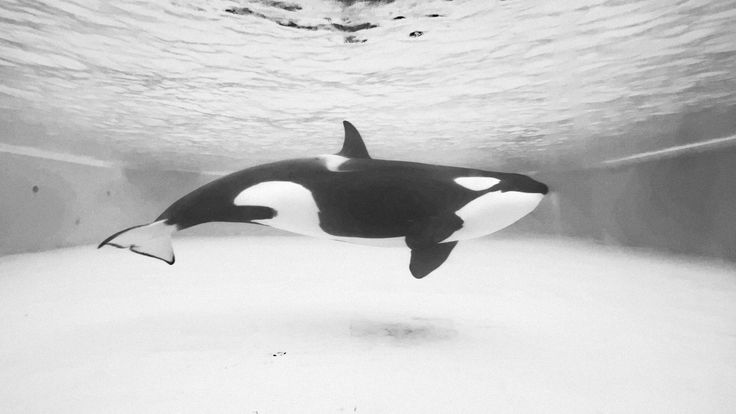In August 2025, a disturbing clip swept across TikTok claiming that Jessica Radcliffe, a 23-year-old marine trainer, had been killed by an orca during a live performance. The video’s narration even suggested that her menstrual blood triggered the fatal attack. Within hours, millions of viewers had watched, shared, and debated the footage.
But the truth is far less dramatic—and far more revealing about the state of misinformation online. The Jessica Radcliffe orca video was a complete fabrication.
Jessica Radcliffe Orca Story: What Really Happened
Despite its emotional pull, no evidence supports the idea that Jessica Radcliffe was a real marine trainer. There are no employment records, obituaries, or credible news reports confirming the event. Instead, investigations by multiple outlets revealed the clip as a clever but malicious blend of manipulated footage, AI-generated voices, and unrelated marine park scenes.
The hoax used convincing video techniques—some likely involving deepfake technology—to make the scenario appear plausible. The creators tapped into viewers’ familiarity with genuine marine animal tragedies, such as the 2010 death of SeaWorld trainer Dawn Brancheau, to make the story feel authentic.

Why The Jessica Radcliffe Orca Video Went Viral
The success of the hoax lies in the psychology of virality. Shocking or dangerous events trigger strong emotional reactions, and social media algorithms are built to amplify precisely that kind of content. Once the Jessica Radcliffe orca clip began gaining traction, TikTok’s engagement-driven system ensured it reached millions more.
Sensationalism isn’t new, but platforms like TikTok reward it at lightning speed. A video can accumulate millions of views before fact-checkers or moderators have a chance to act, meaning that even after a debunk, misinformation can linger in the public consciousness.
The Real Cases That Made the Jessica Radcliffe Orca Hoax Believable
The fabricated story resonates because it echoes real events. In 2010, an orca named Tilikum killed SeaWorld trainer Dawn Brancheau during a live show—a tragedy widely covered in the media. Similar fatal incidents have occurred in Spain in 2009 and in Canada in 1991. These real precedents create what psychologists call a “cognitive template,” priming people to believe new, similar narratives.
By borrowing imagery and themes from these genuine incidents, the Jessica Radcliffe orca video exploited an existing public memory, making the fake far harder to immediately dismiss.
The Dangers of Deepfake and AI-Generated Hoaxes
The Radcliffe hoax underscores how advanced AI and deepfake tools have made fake news more convincing than ever. When visual manipulation is sophisticated enough, even trained eyes can be deceived.
TikTok and other social platforms have AI-based systems to detect such content, but these systems often lag behind the speed of virality. In the gap between upload and moderation, millions can see—and believe—a fake.
The Impact on Public Trust in Online Video
One of the most damaging effects of the Jessica Radcliffe orca hoax is the erosion of trust in video evidence. When manipulated clips go viral, it doesn’t just mislead viewers in the moment—it primes them to question even legitimate footage.
This has wider implications beyond social media. Court cases, investigative journalism, and historical documentation all rely on credible visual evidence. If the public increasingly doubts what they see, those institutions suffer.
Regulating AI-Generated Content and Viral Hoaxes
Right now, there is little regulation specifically targeting AI-generated video hoaxes. Some experts suggest mandatory labeling of AI-created or altered media, much like advertising disclosures. Others advocate for changes to algorithmic incentives, discouraging platforms from boosting shock-based content without verification.
Until such measures are implemented, videos like the Jessica Radcliffe orca clip will continue to find audiences, capitalising on the perfect storm of human curiosity and algorithmic amplification.
Why the Jessica Radcliffe Orca Hoax Matters
This story isn’t just about one fake video. It’s a warning about the ecosystem we all participate in: one where a hoax can travel faster than the truth, where AI tools make deception look real, and where the reward structures of social media encourage creators to chase clicks at any cost.
In 2025, the most dangerous predators in the digital ocean aren’t orcas—they’re false stories wearing the skin of truth.
FAQs About the Jessica Radcliffe Orca Video
Was Jessica Radcliffe really killed by an orca?
No. There is no credible evidence that Jessica Radcliffe ever existed as a marine trainer or that such an incident occurred. The video claiming her death by orca attack is a fabricated hoax.
Is the Jessica Radcliffe orca video real?
No. Investigations by multiple news outlets have confirmed the video is fake, created using edited and AI-generated footage to make the attack look genuine.
Why did people believe the Jessica Radcliffe orca attack was real?
The hoax mimicked real-life orca incidents, including the 2010 death of SeaWorld trainer Dawn Brancheau, which made it seem plausible. High-quality editing and deepfake techniques also made the video look authentic.
How did the Jessica Radcliffe orca hoax spread so quickly?
The video’s shocking nature triggered rapid shares on TikTok, where algorithms prioritise viral and emotionally charged content. This allowed the clip to reach millions before fact-checkers intervened.
What’s the danger of videos like the Jessica Radcliffe orca hoax?
They spread misinformation, erode trust in genuine visual evidence, and show how AI and deepfake technology can be used maliciously. Such content can have lasting effects on public perception even after it’s debunked.

